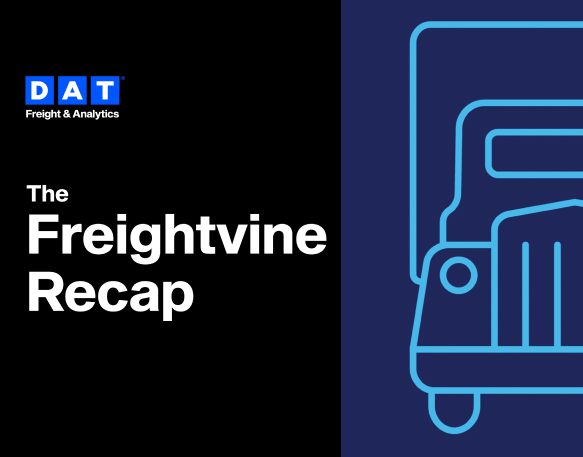Truckload, for-hire, and private fleets are well aware that their biggest commodity is their drivers. And they need to keep their most important resource happy and on the job while also recruiting new drivers to join their ranks.
The current truck driver shortage is about 80,00. It’s expected to double to 160,000 by 2030, according to the American Trucking Associations.
DAT’s Dr. Chris Caplice spoke with the leading expert on driver compensation and recruiting/retention strategies – Leah Shaver, president and CEO of The National Transportation Institute – to get some insight on how fleets are revamping the way they approach driver compensation and why spending time and money on driver retention delivers more value than focusing solely on recruiting.
Caplice and Shaver discussed the evolution of truck driver compensation packages and how that impacts retention and recruitment in the industry on a recent episode of his Freightvine podcast.
Top 3 ways the driver shortage impacts compensation
Now that truck drivers are a highly sought resource, it is showing in their compensation packages. The typical way of paying for only drive time is changing, and drivers are also seeing additional benefits beyond wages. Shaver and Caplice talked about the three biggest changes they’ve seen in how drivers are compensated.
1. Compensation has significantly increased. Fleets increased pay and sign-on bonuses to attract drivers and retain current ones. The competition is stiff, especially in times of low unemployment like we’re experiencing today, because there are more opportunities available to those who are typically drawn to the trucking industry.
Shaver noted that the “median mileage pay in Q3 2022 for one-year of experience is now higher than the median cap pay for drivers with the highest level of experience in Q3 2018.”
2. Compensation packages are changing for the betterment of the driver. It’s not just salary or wages that are increasing, but how drivers are paid is actually improving. Fleets are now paying for other job-related tasks rather than just miles behind the wheel. Some carriers are even changing to hourly pay and covering dwell time or empty hours.
“In terms of retention and making the industry more attractive, the greatest demand that drivers have is for their time at work to be paid,” Shaver said. “So, the compensation package has considerably changed over the years.”
3. It’s about more than just money. While the extra money is a big draw, it’s not the best at improving retention. For many drivers, they want a better work-life balance.
In an effort to meet that need, fleets are finding ways to have drivers put in less time on the road and more time at home. Private fleets are shifting to more local or regional hauls and coordinating relays, so multiple drivers share one long-haul load.
Drivers are also seeking improvements from the places they deliver to. They want less dwell time and some additional amenities provided.
“The number one thing a driver is going to tell you is ‘Make my time at your location shorter, give me some human elements, give me some water, even better if it’s coffee, and, for goodness’ sake, give me access to a clean, safe restroom’ – it can be as simple as that,” Shaver points out.
Better retention = better recruiting
While compensation is changing, Shaver also said it’s important to invest in other areas as well.
There’s a number of benefits to keeping your current drivers behind the wheel. It is more affordable than recruiting new drivers. Plus, happy drivers become valuable recruiting tools.
“Recruit from the inside out,” she says. “The more you focus on promoting your programs, reminding drivers why they chose you, what they loved about you, what their friends love about you, and why they should stay, the more that driver is going to be your best ambassador and do the recruiting for you.”
For instance, Shaver said if you have $100,000, she recommends spending 85% on retaining drivers and the remaining 15% on recruiting. It will have the best return on investment in the long run.
Listen to the full episode of this Freightvine podcast to hear Shaver discuss more about how NTI aggregates their data in creating the National Driver Wage Index as well as her take on the new laws impacting driver compensation.

